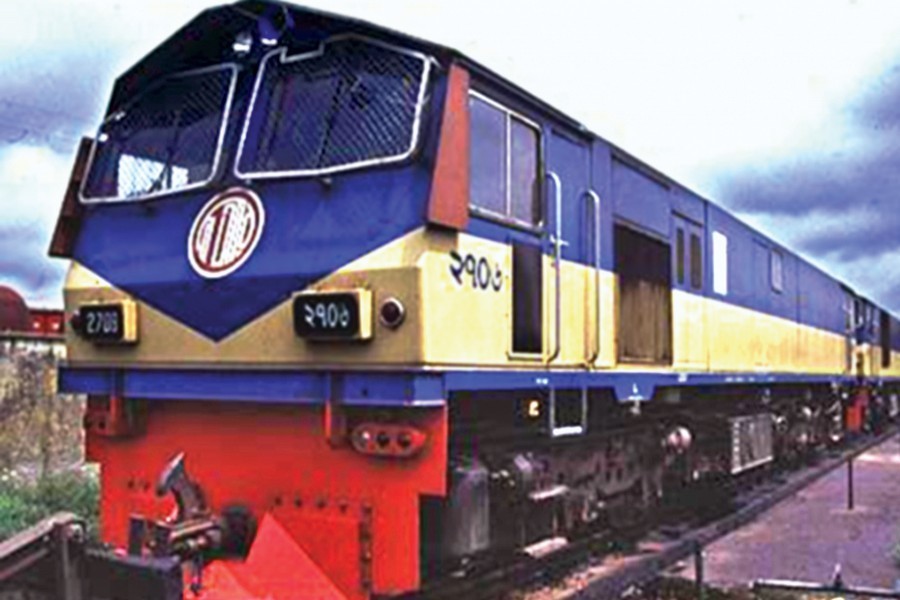How does one explain the delay of around eight years for procuring seventy locomotives (engines) for the Bangladesh Railway? News on the issue has come up prominently in the local newspapers recently. Clearly, when the urgency of revamping the Bangladesh Railway -- a long-felt need left to utter neglect for decades - is a top priority, this is highly frustrating for those who eagerly want the BR to deliver its services well and efficiently.
There are reasons to believe that the government is earnest in restoring the railway to its rightful place as the most convenient mode of transport for carrying both humans and cargo. But absence of any noticeable change in mending the flaws and overcoming the longstanding constraints makes it a narrative of inaction, incompetence and vain expectations.
True, the railway suffers from many ills. A master plan has been framed to address the problems which among others include some projects for procurement and development of railway infrastructure across the country. As for the procurement of locomotives (70 to be precise), there is no move forward since 2011 when decision to this effect was taken. Surprisingly, it has been reported in the media that the BR has asked for five more years to procure the locomotives, as it could not implement the project despite its inception in 2011. The government extended the time twice, lastly up to June 2019 to procure the 70 metre-gauge (MG) diesel electric (DE) locomotives. But what has blocked the procurement for so long seems to be indecision, even confusion as regards funding and also the design of the locomotives.
It may be mentioned that the BR took up the project in 2011 to procure the 70 MG DE locomotives at a cost of Tk 19.46 billion. The project was scheduled to be completed by June 2017. Then the government extended the deadline by one year to June 2018 due to the failure to appoint supplier. Again the government extended the deadline by one more year to June 2019 without raising the project cost. Now, the BR has sought revision of the project till 2024 with a cost escalation of 37 per cent to Tk 26.59 billion.
No doubt, many issues are involved with such a big procurement. Still, not moving forward for eight years is indicative enough of the lack of drive in the BR leadership. This procurement issue is cited as a case in point to show what the people can expect from this inept organisation.
One may recall that way back in the mid-eighties, BR underwent a phase of remarkable revamping. Intercity trains in adequate numbers were introduced and a lot of other activities were taken to facilitate travel across the country comfortably and affordably. There was a noticeable improvement in passenger servicing -- from selling tickets to maintaining cleanliness to strictly following the timetable. All these were done without much capital investment like procuring locomotives or rail wagons or compartments. It was predominantly the leadership spearheaded by the communications ministry that proved highly dynamic in bringing a sea change in the overall railway operations. The activities undertaken at that time lasted until the late nineties when symptoms began to surface that the BR needed another boost - the earlier one having been worn out by then. Unfortunately, there was no worthwhile move, let alone the required boost, to save the BR from gradual ruination of its accomplishments of the previous decade. In fact, that was the beginning of the fall, and in the years that followed things only turned from bad to worse-a process deteriorated further by the government's thoughtless steps to promote road transport as an alternative to railway. Private transport operators began to import super luxury buses to hit the highways. The trend gained increasing momentum in a short time and kept growing to totally outshine the railway. The situation is the same even to this day.
Energising the railway is no simple task. Mere commitments are not going to help, no botched-up solution will do. Decades of neglect have eroded much of the prospects that the railway was once capable of. In its present state, it is unable to respond to makeshift remedies. Capital investment is a must, and to see to it that the investment is made in the right areas, there has to be efficient leadership to steer things clear. The stalemate in the procurement of locomotives for long eight years, as mentioned above, speaks how appallingly the BR suffers from leadership crisis. It is not fair to suggest how the BR should go about in reviving its good old days, as the authorities know it better than anybody where the maladies are and how to address those. The important thing that must not be forgotten is that common people across the country are still in wait to see the railway emerge as their most preferred mode of travel.


